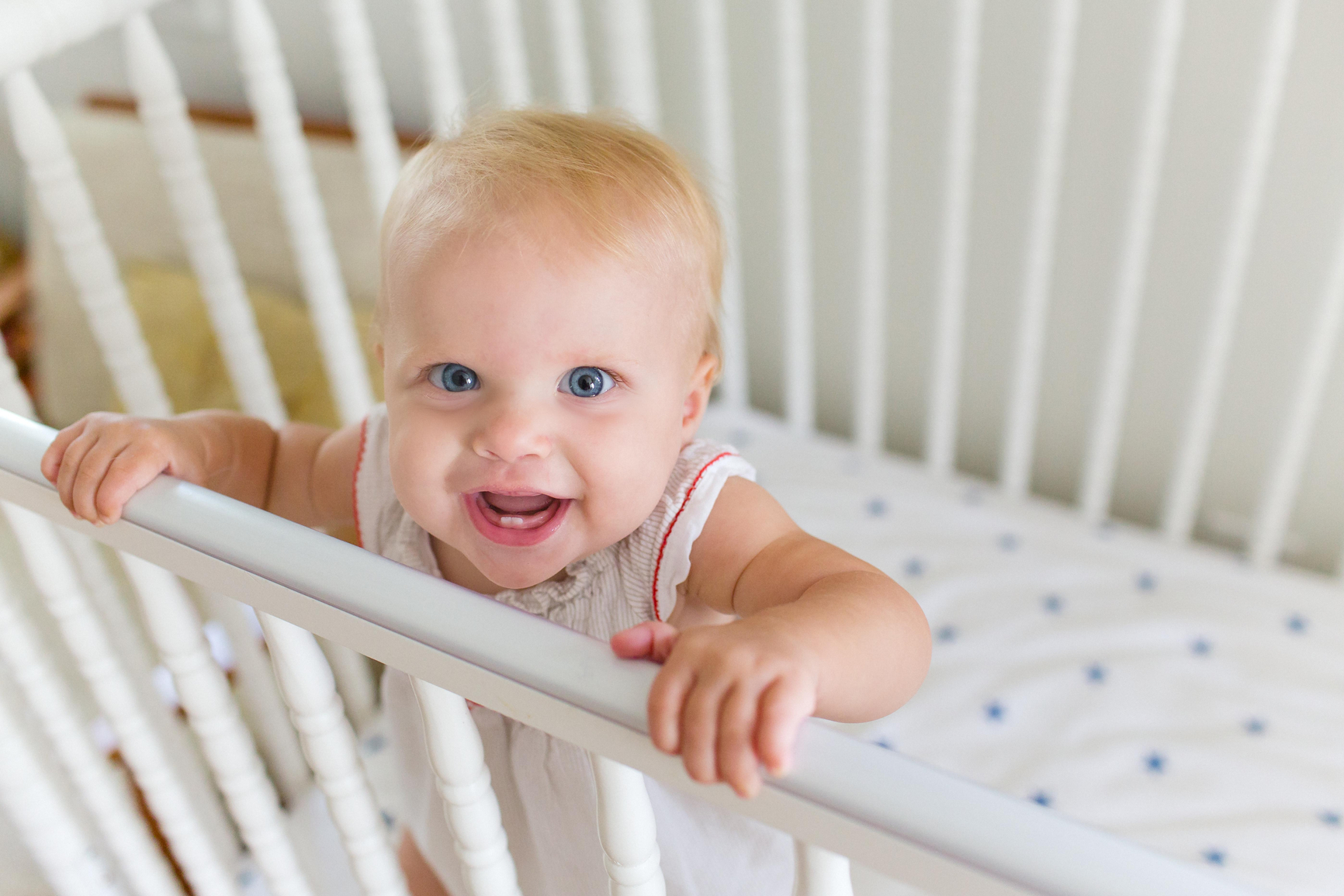Just with most parenting strategies and ideals what works for some may not work as well for others. Having your young child sleep in a cot for the first 2.5-3 years of life is typically a good idea for a lot of families. Many parents will choose to transition their child from the cot into a bed at a much earlier age, for a variety of reasons. Commonly parents make the choice to have their child sleep in a bed from an earlier age, as the child requires a parent to stay with them at bedtime and possibly during the night as well and it is a more comfortable sleeping arrangement and many families subscribe to bed-sharing. Safety can also play a significant part in the decision, especially if the child is inclined to climb or jump out of the cot. However, I would normally advise parents to not rush this transition and to keep the toddler in their cot until at least 2.5 and closer to 3 years if possible. Don’t be inclined to introduce the bed to make room for a new baby, ideally purchase a second cot unless it is age appropriate.
Closer to 2.5-3 years of age, not only will your little person understand instructions like “stay in your bed” but s/he will also have the impulse control to carry out the command or at least make an effort to comply. If you make this transition prematurely you may find that your child cannot help but keep getting out of the bed and the only way to keep them there is to stay with them and thus creating a potential sleep problem going forward.
If you have purchased a traditional cot, ideally with open slats all around and acquired a firm and appropriate mattress, then it will more than likely be big enough until your child is older and ready for a big bed. Lots of parents report that their young child was never comfortable in the cot always banging their head and body off the sides, but I find that these child are often placed in the cot already asleep and therefore have not learned how to “be “ in the cot and find it difficult to find a comfortable position for this reason.
When you do decide to make the upgrade from cot to bed, get your young child involved in the transition. Let him/her pick out the bed that you would like to buy and the accompanying bedding. Help get your child invested in the new arrangements; deciding where the bed should go and ingrain an understanding of the change that you are making. It can often be overwhelming and a bit of a revelation for some children to discover the new mobility and increasing independence that a bed will bring. A bed rail is a good idea also to prevent the rolling out and to help keep the bed covers on. Often a newly-transitioned bed sleeper finds a duvet too big to manage, so using some of the bedding from your cot can often make the upgrade easier too.
I would encourage good sleep manners around bedtime, explaining that you expect your child to lie quietly, close their eyes and go to sleep. The last thing you will want to your child to leave the bed multiple times after the bedtime routine is finished. Perhaps at the start the use of a reward chart and some positive reinforcement can help make a seamless transition.
You will likely need to modify your existing bedtime routine and if in the past this has been a quick affair, you may benefit from tagging some additional time before you separate. Low impact, quiet time, in the bedroom, with plenty of physical and eye contact can help promote positive associations with sleep. Story time, catch up time and maybe some relaxation exercises can be part of your process. It is important that your bedtime routine has an ending and that you don’t get caught with typical stalling tactics like “one more story” “I’m hungry” “I have a pain in my stomach” for example. Often the use of a lamp on a timer can help indicate the end of a bedtime routine or indeed an “I love you” ritual that rounds off the bedtime is a good idea.
If you don’t routinely stay with your child when they are going to sleep, it is probably not a good idea to start that now as it can be habit forming and lead to frequent night waking or at the very least a late onset of sleep. If your little person is inclined to keep getting out of the bed at the start, meet them in the hallway and quietly return them to bed; handled correctly, this will not continue. If you find your child’s sleep deteriorates for a week or so subsequent to the move, don’t worry, it will typically pass. Similarly if you find it impossible for your child to stay in the bed at all, don’t panic, perhaps you have made the move too soon. Get your cot back out and try again at a future date.
Lucy Wolfe, CGSC, MAPSC, is a paediatric sleep consultant and mum of four young children. She runs a private sleep consulting practice where she provides knowledge, expertise and valuable support to families across the country. See www.sleepmatters.ie <http://www.sleepmatters.ie>, t: 087 2683584 or e: lucy@sleepmatters.ie



